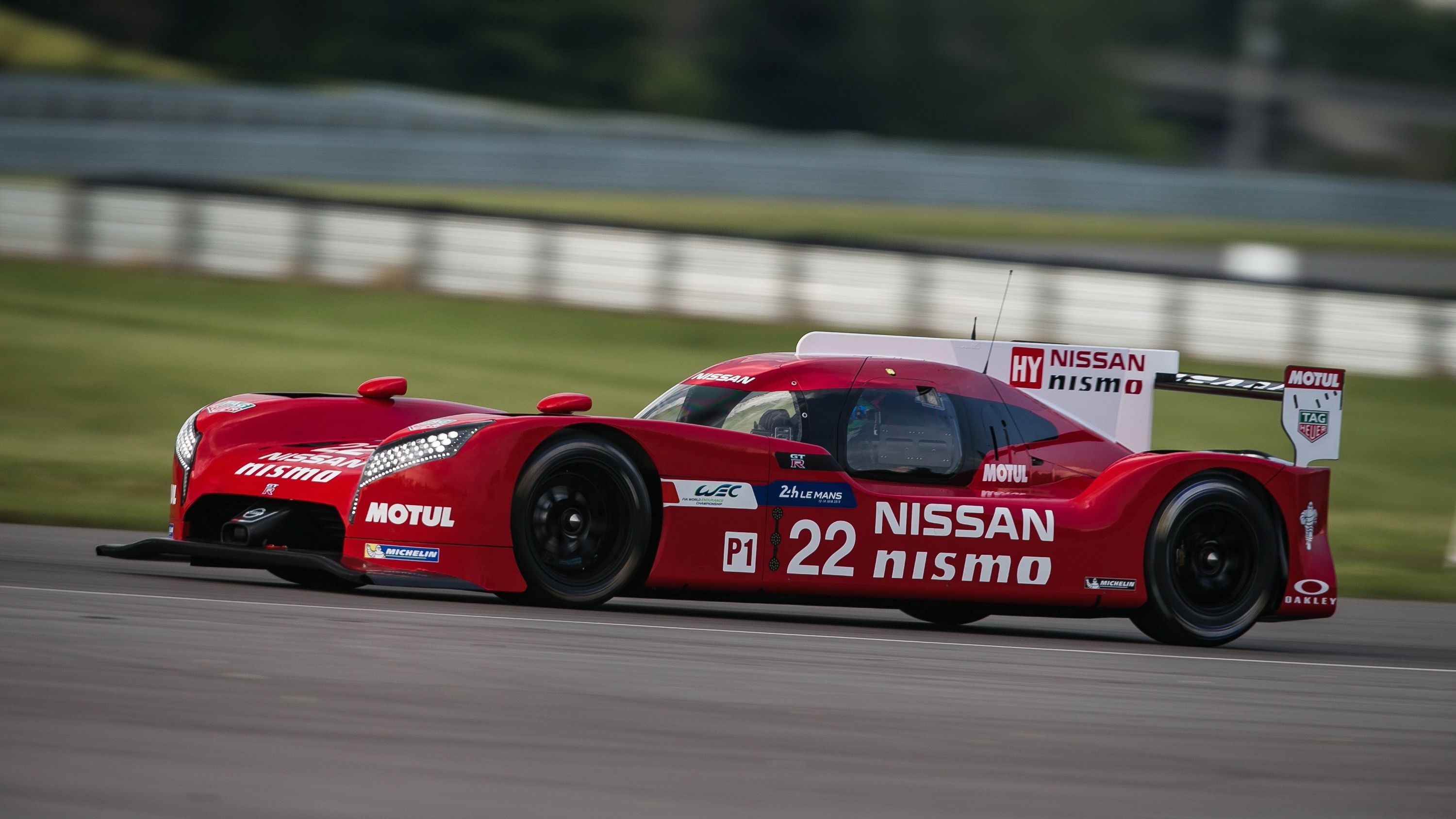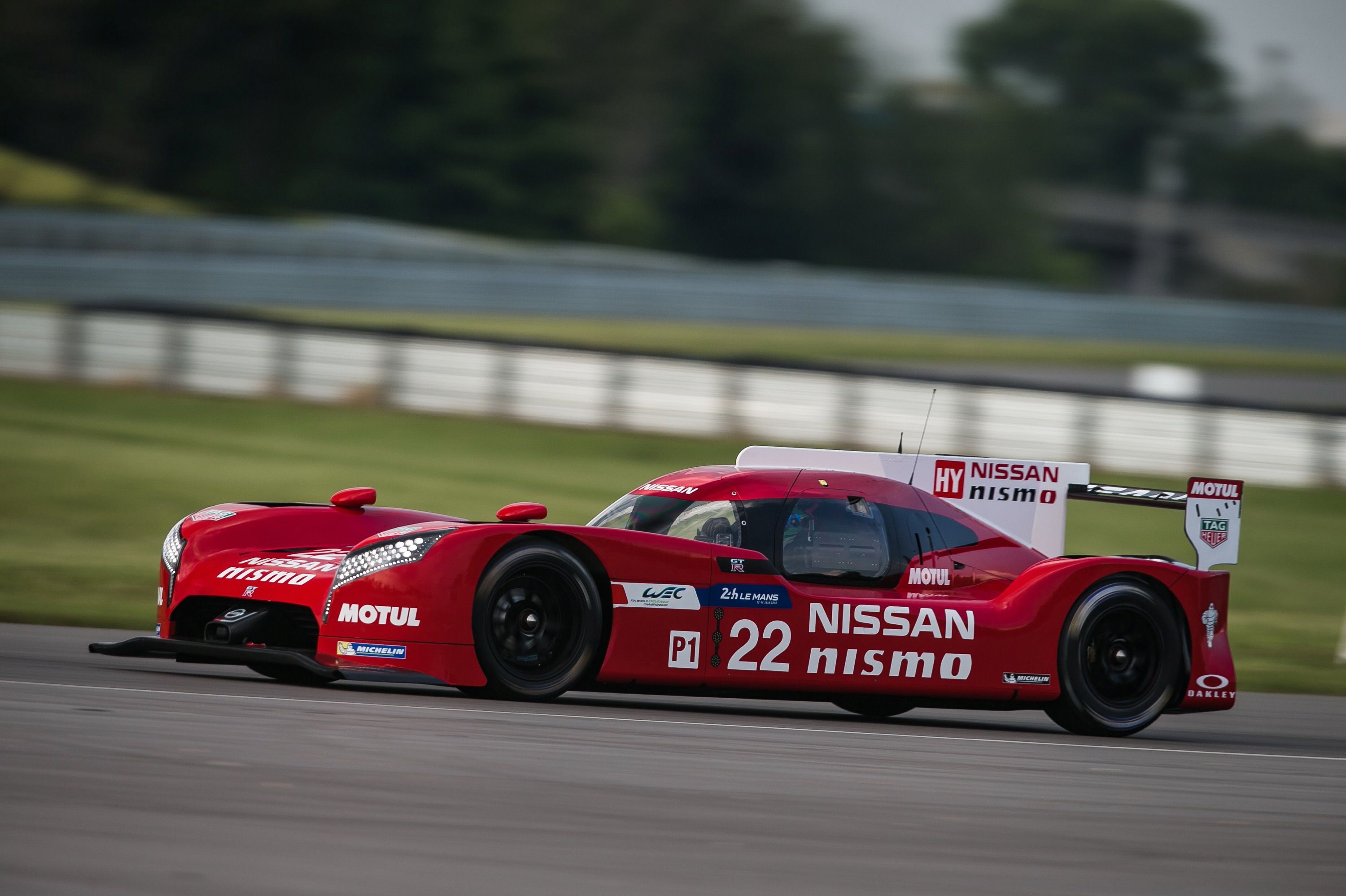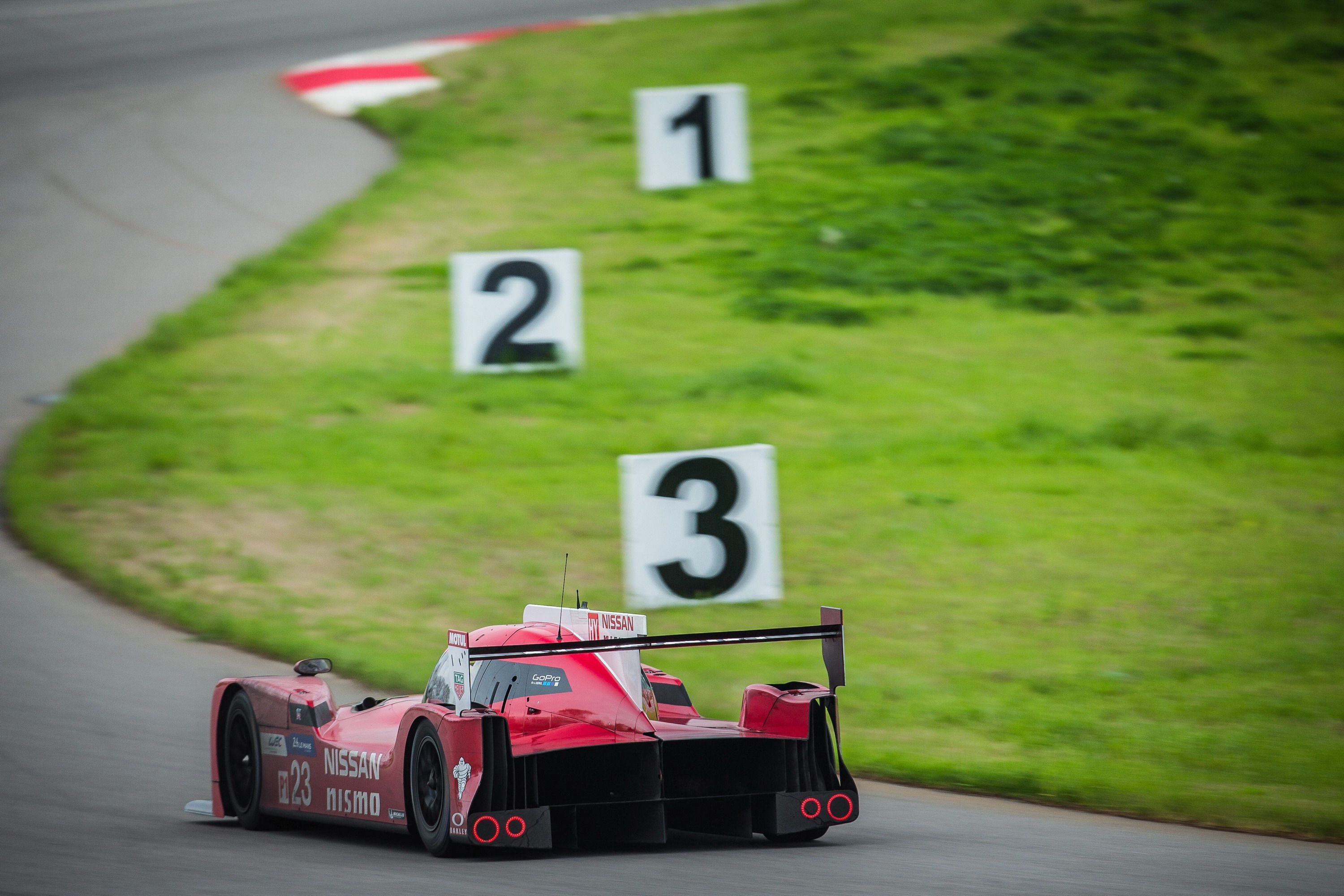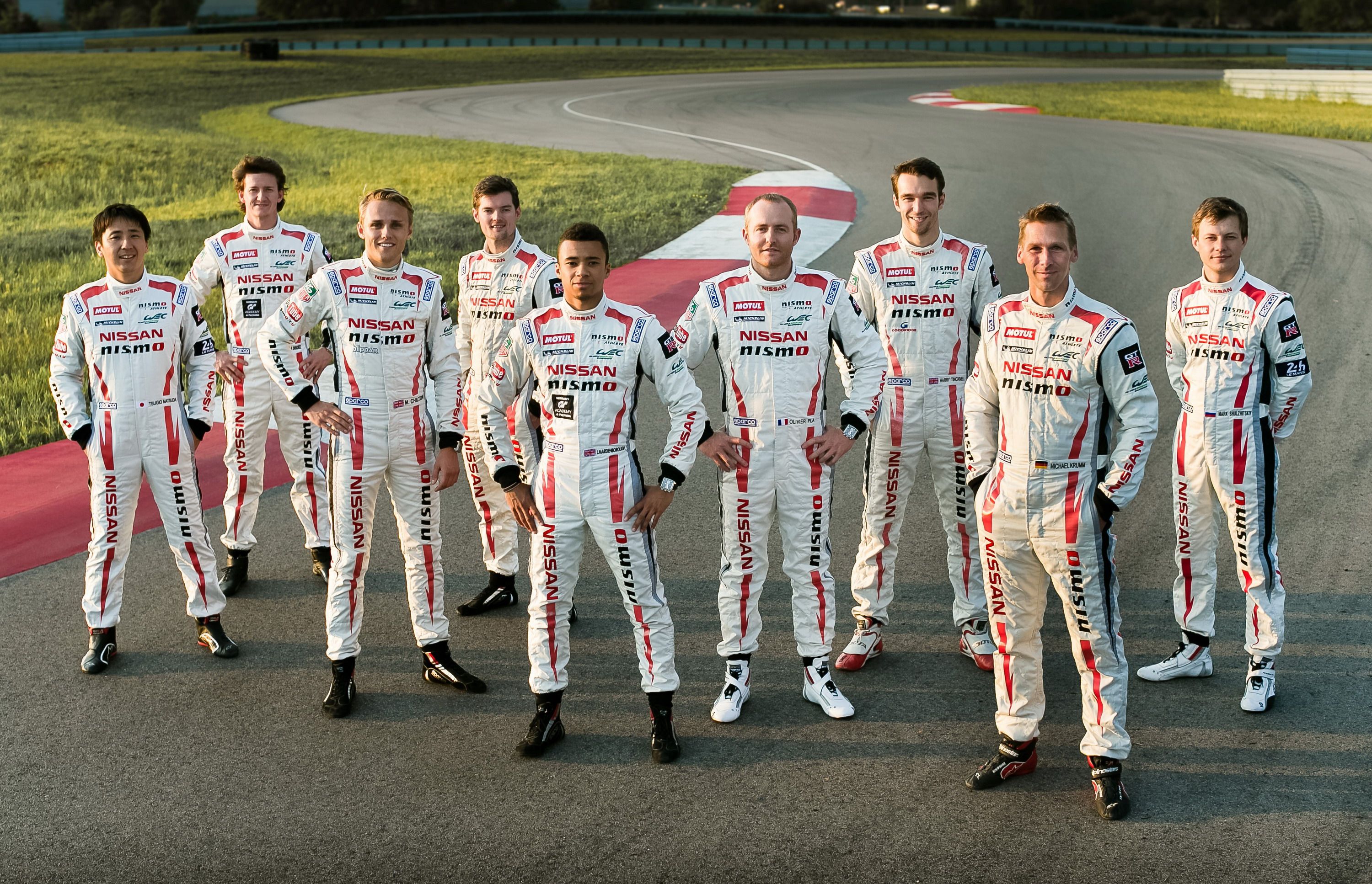After a 16-year break from the biggest event in endurance racing,->ke447 Nissan->ke62 will once again return to the Circuit de la Sarthe for the 24 Hours of Le Mans,->ke1591 this time with a trio of unusual race cars->ke148 aimed at upending convention in the LM P1 class.
In case you weren’t already aware, Nissan’s entries will sport a number of features that are a clean break from the usual prototype racer. Most notable are the driveline layouts, which will be front-engine and FWD, rather than the usual mid-engine, RWD/AWD layout found in top competitors from the likes of Audi->ke14 and Porsche.->ke1
Taking the helm will be an international assemblage of nine drivers plucked from the ranks of Formula One->ke190 and sports car racing. Nissan will also source hot-shoes from its GT Academy, a competition program that offers Gran Turismo->ke3689 gamers the chance to take their virtual skills into the real world with a shot at a pro racing career.
Behind the wheel of the #23 car will be ex-F1 racer Max Chilton, GT Academy winner and GP3 competitor Jann Mardenborough, and sports car star Olivier Pla. Meanwhile, NISMO athlete Michael Krumm, LM P2 Le Mans-winner Harry Ticknell, and GT Academy ace Alex Buncombe will be assigned the #22 car. Finally, the #21 car, which is draped in a special red, white, and blue livery to commemorate the Nissan R90CK that managed to clinch a pole position at Le Mans 25 years ago, will be driven by current Super GT Champion Tsugio Matsuda, premiere GT Academy winner and current Super GT500 competitor Lucas Ordonez, and the first GT Academy Russia winner, Mark Shulzhitskiy.
Look for the three Nissan GT-R LM NISMOs to take the track on Wednesday, June 10th, for the free practice session. Qualifying gets underway a bit later on Wednesday and runs into Thursday evening, followed by the official start of the 83rd 24 Hours of Le Mans on Saturday, June 13th.
Continue reading for the full story.
Why it matters
Despite a huge amount of publicity, Nissan claims the GT-R LM NISMO’s novel approach to endurance LM P1 competition is much more than a marketing exercise. The brains behind the car is Ben Bowlby, also known for creating the All American Racers DeltaWing and ZEOD RC, both of which took a different approach to well-established go-fast doctrines and ended up with less than stellar performance records.
Why take another chance? “The reason for us going front-engined is that we have a very long bonnet and that means we can maximize our surface area for downforce,” explains GT Academy-winner Jann Mardenborough. “We try to get as much downforce on the car as possible to make us go faster through the corners. Also you need a streamlined car so you’re very efficient in a straight line.”
Maximum downforce with minimal drag is an extremely potent combination for prolonged stints at the Circuit de la Sarthe, which boasts several ludicrously long straights followed by tight corners, making a well-balanced aero package particularly vital for success. Just a few extra mph eked out before the braking zone can make all the difference, especially when accumulated consecutively over the course of 24 hours.
FWD also adds the benefit of a more efficient drivetrain, which will put the power down with less parasitic loss than if it was sent to the back. That could translate into better fuel economy, and consequently, fewer pit stops.
But there’s a reason the GT-Rs->ke1592 will be the only FWD vehicles on the grid. Asking the front tires to turn, stop and go means striking the right balance of inputs can be tricky. Screw it up, and you’ll lose traction in the front, leading to understeer, a racer’s mortal enemy.
Regardless of this inherent drawback, the drivers in Nissan’s service should manage to get the most from the cars. The roster lineup is impressive – each name has a proven record attached to it, and you can bet they’ll be hungry to prove the worth of the GT-R’s innovations.
"It’s great to be part of a works team that has come to Le Mans with such a radical concept design," said Max Chilton in a press release. "I think people are giving us credit for trying it and I think with time we can show that people maybe haven’t always been doing Le Mans in the right way. The torque is outstanding. More than any other racing car I’ve driven. I don’t think you have to drive it as differently from rear-wheel drive as I expected, but you have to think about your driving in more detail."
Unfortunately, there has been a litany of setbacks for the crew thus far. Even with a lot of money and experience to back it, the GT-R team was forced to withdraw from the first two races of the 2015 WEC season.
However, it’s not altogether that surprising, given the newness of the program (not to mention the novelty it represents). The first track test was in November of last year, with development occurring where and when the team could get it. Last weekend, for example, the car made its initial public debut at the official Le Mans Test Day, with the three GT-Rs completing over 1,500 km (932 miles) of running, adding a good deal of data towards development.
"Our main aim for this year was always Le Mans and we have decided to re-focus on that race,” Nissan global motorsport boss Darren Cox told autosport.com in March. "It's no secret that with such a different car that we have faced a number of challenges, so right now we would rather be testing in April and May rather than racing."
Personally, I can’t help but root for the underdogs. This year’s Le Mans is of vital importance for Nissan, and for a number of reasons. Not only would a poor showing be a huge letdown after the torrent of media attention the car has enjoyed, but the Japanese automaker still has something to prove when it comes to this prestigious event. Nissan made its Le Mans debut in 1986, with best results coming in 1998 when its #32 R390 GT1 car managed a third place podium. But that’s not a win.
It’s a sentiment echoed by the drivers: "I’ve raced for Nissan NISMO for 16 years now and I was part of the team in the top class at Le Mans in 1998 and 1999 and they were very enjoyable early years with Nissan," said Michael Krumm in a press release. "To now have the opportunity to come back to complete our unfinished business (we retired in 1999) means a lot. To help develop a new car and be part of the race squad is a big honor for me. That said I thought the team was mad until I saw the simulations and had it all explained to me by Ben (Bowlby) and Ricardo (Divila). From that moment I was extremely excited about the concept. The most impressive thing to me was how good the traction was in a straight line and aerodynamics - the car is very low drag so it just goes and goes and goes! I love the engine. It is a really nice turbo engine with amazing torque. We’re going to be quicker and slower than other cars at different parts of the circuit so it’s going to be interesting. I think the FWD will show some serious advantages if it is wet at Le Mans."
Throw in the fact that the LM P1 racer is most likely the test bed for the next-gen road-going GT-R’s powerplant, and it looks like Nissan has quite a few eggs in this one basket. But with about a week left before show time, the team says it’s ready to go: "It’s great to see Nissan still pushing in a different direction to the other teams with the GT-R LM NISMO," said Lucas Ordonez in a press release. "It’s good for the fans and good for the sport. Performance-wise the car is really strong on engine power and top speed. It’s different to drive, which makes you work hard on understanding the car and adapting what you know to suit it, but all of us (drivers) are working together to get the best from the car and ourselves."
2015 Nissan GT-R LM Nismo
With the majority of the GT-R LM NISMO’s mechanical bits stuffed in front of the cockpit, there’s a good deal of space in the middle and rear for ducting and air channels, thus reducing drag despite huge downforce. Driving the front wheels is a 3.0-liter V-6 gasoline engine boosted by two turbos to 550 horsepower. Complementing this is an energy reclamation system that adds an additional 700 electric horsepower for a grand total of 1,250. With less than 2,000 pounds to push around, this thing should absolutely fly down the straights, just so long as it can put the power down. Helping this are 14-inch tires shod in gummy race slicks up front, outsizing the 9-inchers in the rear.
Read our full review here.




